Power Pitch
MRI Safety
ISMRM & ISMRT Annual Meeting & Exhibition • 10-15 May 2025 • Honolulu, Hawai'i

| 13:15 |
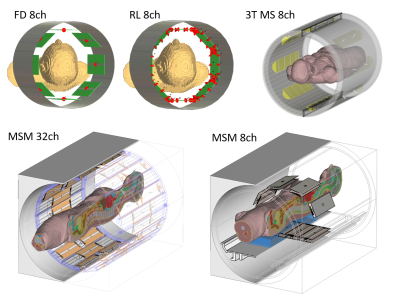 |
Screen Number: 26
1308. On
the measurement errors in SAR supervision introduced by
directional couplers
S. Orzada, T. Fiedler, J. Kesting, M. Hubmann, M. Ladd
German Cancer Research Center (DKFZ), Heidelberg, Germany
Impact: This work provides a framework for calculating
the measurement error in SAR calculations introduced by the
directivity of the directional couplers used to measure the
forward power in parallel transmit systems.
|
| 13:17 |
 |
Screen Number: 27
1309. Initial
validation of a 16-Channel Double-Row Transmit/Receive Coil
Array for Safe Imaging with Deep Brain Electrodes at 3T
N. Karadeniz, S. McElroy, J. V. Hajnal, Ö. Ipek
King's College London, London, United Kingdom
Impact: This
study provides the first experimental evidence that a
double-row pTx coil can defeat RF currents on DBS electrodes
while maintaining homogeneous B1+ at
3T. This technology could enable safer and more effective
MRI for this patient group.
|
| 13:19 |
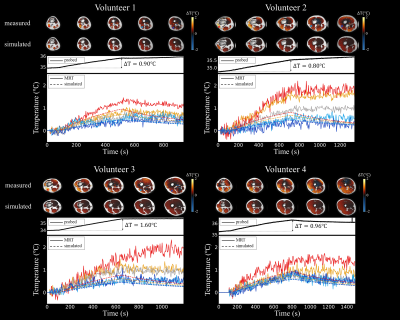 |
Screen Number: 28
1310. Assessment
of RF induced tissue heating at 3T through MR Thermometry with
comparison to subject-specific simulations
M. Kikken, K. Custers, E. Meliadò, C. van den Berg, A.
Raaijmakers
University Medical Center Utrecht, Utrecht, Netherlands
Impact: Within
RF safety SAR guidelines, MRT measurements of RF induced
heating for 3T MRI are feasible around the knees and show
temperature increases of almost 2 °C. Among others, the
presented methodology provides promise for potential
validation of thermal simulations.
|
| 13:21 |
 |
Screen Number: 29
1311. Feasibility
of a universal parallel transmission RF shim concept for safer
imaging of deep brain stimulation patients at 3T
B. Yang, S. Graham
Sunnybrook Research Institute, Toronto, Canada
Impact: A universal parallel transmission concept to
safer MRI of DBS patients was studied. The initial results
suggest patient-based safe modes may remain effective for a
broader DBS patient cohort, supporting further study toward
clinical application.
|
| 13:23 |
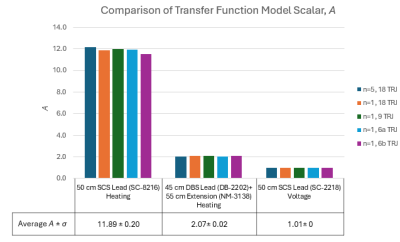 |
Screen Number: 30
1312. Impact
of Implant Manufacturing Variability & Number of Measurements on
Assessing RF-Induced Lead Heating & Injection Voltage
C. Kwok, N. Chamok, A. Dabir, A. Avakians, K. Bond, L.
Al-Dayeh
Boston Scientific, Valencia, United States
Impact: Optimization of the needed number of in-vitro
radiated measurements and active implantable medical device
(AIMD) lead samples for ISO/TS 10974:2018 Tier 3 based
Clause 8 (RF-induced lead heating) and Clause 15 (RF-induced
injection voltage) MR Conditional safety assessments.
|
| 13:25 |
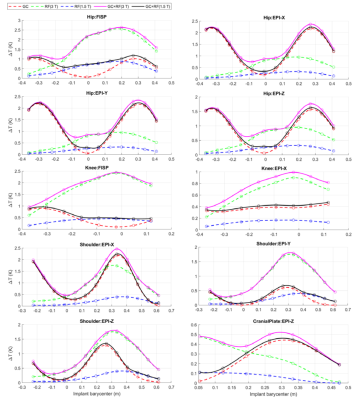 |
Screen Number: 31
1313. Additive
RF and Gradient-induced Heating of Passive and Active Implants
Under Clinically Relevant Exposures during MRI
U. Zanovello, C. Fuss, T. Goren, A. Arduino, L. Zilberti, O.
Bottauscio
INRIM, Torino, Italy
Impact: Bulky nonmagnetic metallic implants are
demonstrated to experience up to 15 % increase in maximum
local temperature rise due to additive RF and
gradient-induced heating under clinically relevant MRI
exposure conditions.
|
| 13:27 |
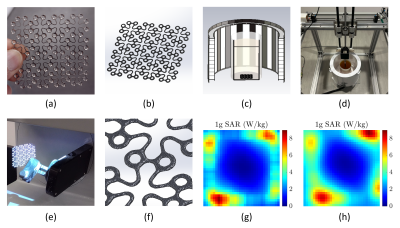 |
Screen Number: 32
1314. Evaluating
the RF Heating of Titanium Craniofacial Mesh Implants at 7T
M. Mustafa, N. I. H. Zulkarnain-Lemke, A. Sadeghi-Tarakameh,
A. Grant, C. Ozutemiz, D. Darrow, Y. Eryaman
University of Minnesota, Minneapolis, United States
Impact: Imaging titanium mesh head implants for skull
reconstruction procedures may be safe for MR scan at 7T
following the IEC guidelines.
|
| 13:29 |
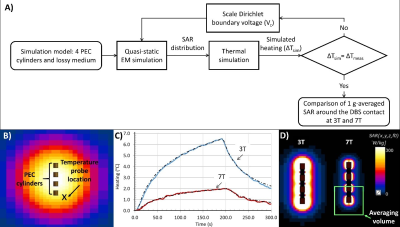 |
Screen Number: 33
1315. An
Experimental Comparison for RF Heating of DBS Electrodes at 3T
and 7T
N. I. H. Zulkarnain-Lemke, A. Sadeghi-Tarakameh, J.
Thotland, N. Harel, Y. Eryaman
University of Minnesota, Minneapolis, United States
Impact: Comparing 1 g-averaged SAR (normalized to B1+RMS2) around
DBS electrodes at 3T and 7T suggested that 7T MRI may pose
less heating risk and provided a compelling case to expand
the potential of imaging DBS patients at higher-field MRI.
|
| 13:31 |
 |
Screen Number: 34
1316. An
open-source implementation of the IEC/IEEE 62704-1
spatial-average SAR algorithm
U. Zanovello, N. De Zanche
University of Alberta, Edmonton, Canada
Impact: The spatial-average SAR implementation enables
average SAR computation compliant with IEC/IEEE 62704-1
without using commercial software. Typical applications
include post-processing using circuit co-simulation, or to
add this capability to EM solvers that lack this feature.
|
| 13:33 |
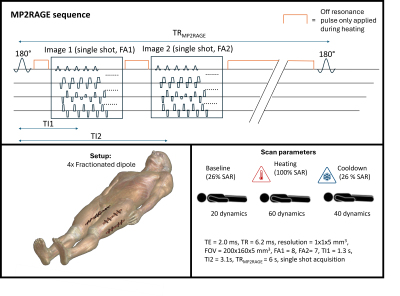 |
Screen Number: 35
1317. Optimization
and application of MP2RAGE sequence for T1-based thermometry in
the fat layer of the human calve
K. Custers, M. Kikken, E. Meliadò, C. van den Berg, J.
Pluim, A. Raaijmakers
Eindhoven University of Technology, Eindhoven, Netherlands
Impact: We present a highly sensitive T1-based
thermometry method applicable in fatty tissues for RF safety
research. MRT in fat will be valuable to improve
verification by fiber-optic probes on the skin and -using
intrinsic reference- assessment of fat susceptibility
change.
|
| 13:35 |
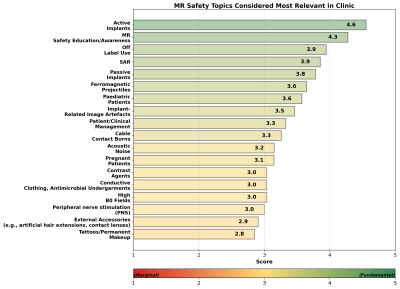 |
Screen Number: 36
1318. MR
Safety Priorities and Practices: Results from an ISMRM Study
Group Survey
J. Martinez, L. Zilberti, L. Kranold, K. Fujimoto, J. Jahn,
J. Rispoli, T. Owman, L. Winter
National Institute of Standards and Technology (NIST), Boulder, United States
Impact: This survey reveals the MR Safety Study Group's
needs while emphasizing the importance of bridging research
and clinical practice. Understanding community priorities
across diverse backgrounds will guide future initiatives
addressing evolving safety challenges.
|
| 13:37 |
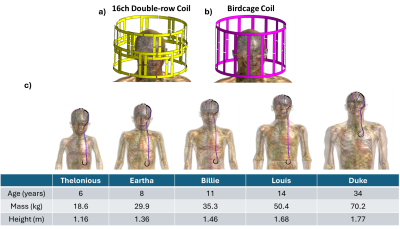 |
Screen Number: 37
1319. Safe
Imaging at 3 Tesla for Children with Deep Brain Electrodes: A
simulation Study of a Double-Row Parallel Transmit Coil Array
N. Karadeniz, D. Lumsden, J. Hajnal, Ö. Ipek
King's College London, London, United Kingdom
Impact: The double-row pTx coil enhances MRI safety for
paediatric DBS patients by balancing B1+ homogeneity and
reducing SAR, minimizing tissue heating risks and enabling
safer, more reliable imaging protocols with consistent
performance across models, potentially improving clinical
outcomes.
|
| 13:39 |
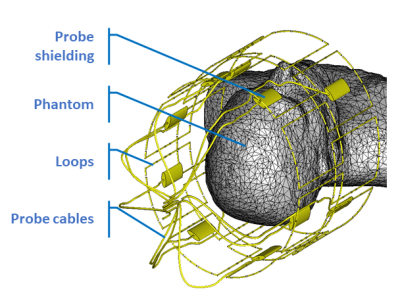 |
Screen Number: 38
1320. Safety
Evaluation of a 16-element 9.4T Human Head Transmit Array with
B0 Field Probes Inserted
E. Berezko, G. Solomakha, N. Avdievich, F. Glang, D. Bosch,
J. Bause, T. Lindig, K. Scheffler
Max Planck Institute for Biological Cybernetics, Tuebingen, Germany
Impact: We showed that insertion of B0 field-probes
does not substantially change the peak SAR and the RF
magnetic field distribution of the 16Tx array at 9.4T.
Predicted SAR changes facilitate safe use of the
field-probes for in-vivo studies.
|
| 13:41 |
 |
Screen Number: 39
1321. A
closer look into the Partial Body SAR definition in IEC
60601-2-33
X. Chen, F. Munoz, Y. Hamamura
Canon Medical Research USA Inc., Mayfield Village, United States
Impact: The lack of specifications in IEC 60601-2-33
regarding RF transmit coil's effective volume can cause
uncertainties in SAR exposure limit assessment. We propose
the standard adding more specifications on this subject.
|
| 13:43 |
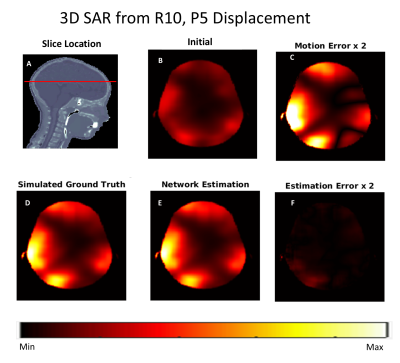 |
Screen Number: 40
1322. Evaluating
Rigid Motion-Affected, U-NET-Estimated Q-Matrices with Parallel
RF Transmission
K. Blanter, A. Plumley, A. Gungor, S. Malik, E. Kopanoglu
Cardiff University , Cardiff, United Kingdom
Impact: The proposed approach needs a smaller corrective
safety factor, which may enable higher-performance scanning
without compromising safety, when using ultrahigh-field MRI
for subjects who may not remain still.
|
| 13:45 |
 |
Screen Number: 41
1323. Effects
of increasing RF transmit frequency on SAR and SAR efficiency in
MRI up to 14 Tesla
R. Daschner, M. Ladd, T. Fiedler
German Cancer Research Center (DKFZ), Heidelberg, Germany
Impact: This study investigates the effects of
increasing RF frequencies on SAR and SAR efficiency,
enhancing the understanding of the underlying causalities.
Findings indicate the feasibility of safely operating MRI
systems up to 14T, supporting ongoing advancements in UHF
MRI technology.
|
| 13:47 |
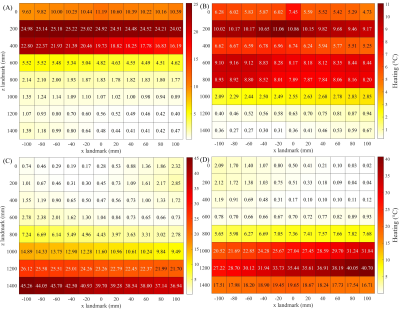 |
Screen Number: 42
1324. Impact
of Lateral Movement of Patients on the RF-Induced Heating of
Active Implantable Medical Devices at 3T MRI
M. K. Akter, A. Shen, M. Z. Islam, J. Zheng, M. Steckner, J.
Chen
University of Houston, Houston, United States
Impact: This research demonstrates that patients with
AIMDs, positioned with lateral offsets, may have additional
heating hazards relative to patients centered in wide bore
MRI coils.
|
| 13:49 |
 |
Screen Number: 43
1325. Experimental
Assessment of Skin-Bore Contact Heating during Magnetic
Resonance Imaging
D. Spenkelink, W. Brink
University of Twente, Enschede, Netherlands
Impact: Although the observed levels did not exceed
regulatory limits on extremity SAR, increased local SAR
levels were observed at longitudinal locations along the
bore wall that correspond to the high levels of conservative
electric field around the bircage endrings.
|
| 13:51 |
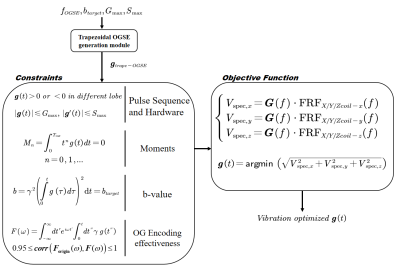 |
Screen Number: 44
1326. Optimization
of Oscillating Diffusion Encoding Gradient Reduces Mechanical
Vibration on Ultra-high Gradient System
X. Chen, H. Li, Z. Shuai, J. Zhu, J. Yuan, Z. Lin, D. Wu
Zhejiang University, HangZhou, China
Impact: OG caused mechanical vibration poses significant
challenge to MRI hardware, especially in high-performance
gradient system. Our vibration optimized OG waveforms can
improve subject’s comfort and have potential to enable more
precise parameter fitting, enhancing the accuracy of
microstructural imaging.
|
| 13:53 |
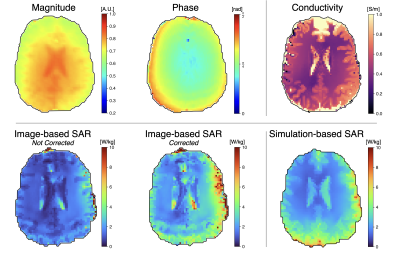 |
Screen Number: 45
1327. Feasibility
Study of Subject-Specific Brain SAR Maps Retrieved from MRI Data
J. Martinez, U. Zanovello, A. Arduino, H. H. Hu, K. Moulin,
S. Ogier, O. Bottauscio, L. Zilberti, K. Keenan
National Institute of Standards and Technology (NIST), Boulder, United States
Impact: A method for image-based patient-specific SAR
mapping retrieved from acquired MRI data in the brain is
demonstrated. The resulting maps aligned with
electromagnetic simulation-based SAR maps, representing a
step toward practical SAR monitoring during clinical
examinations.
|
| 13:55 |
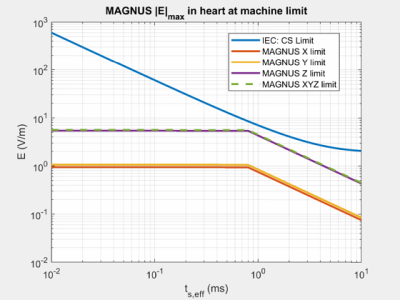 |
Screen Number: 46
1328. E-field
Simulation in Human Body Models for High Performance
Non-Whole-Body Gradient Coil IEC Cardiac Stimulation Compliance
Y. Hua, S-K Lee, S. Gokyar, T. Foo, D. Yeo
GE HealthCare Technology & Innovation Center, Niskayuna, United States
Impact: CS compliance for a NWB GC has not been widely
discussed even though it is a key safety criterion. This
work shows the feasibility of simulation-based CS risk
assessment in a high-performance head GC.
|
| 13:57 |
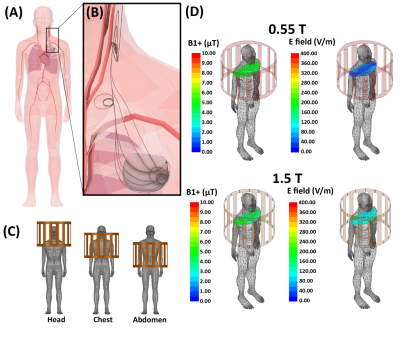 |
Screen Number: 47
1329. Keeping
a Low (Temperature) Profile: An Analysis of In Vivo RF Heating
of Vagus Nerve Stimulation Devices in Low (0.55 T) vs.
High-Field (1.5 T) MRI
P. Sanpitak, B. Bhusal, J. Pilitsis, N. Seiberlich, F.
Jiang, T. Zaidi, L. Golestanirad
Northwestern University, Evanston, United States
Impact: This study challenges the common belief that
low-field MRI is inherently safer for patients with
implants, demonstrating that RF heating at 0.55 T can be
similar to or exceed that at 1.5 T, underscoring the need
for careful patient assessment.
|
| 13:59 |
 |
Screen Number: 48
1330. From
Benchtop to In Silico: Factors Influencing
Radiofrequency-Induced Heating of Bone
S. Moshage, C. Petersen, A. Dillon, E. Brightbill, P.
Delgorio, W. Torres, D. Holyoak, R. Siskey
Exponent, Inc., Philadelphia, United States
Impact: This study enhances MR safety assessments,
showing that high-fidelity computational models can
accurately predict RF-induced heating surrounding implants
in bone while underscoring the dependence of temperature
rise on the geometry and material properties of the media
adjacent to the devices.
|
| 14:01 |
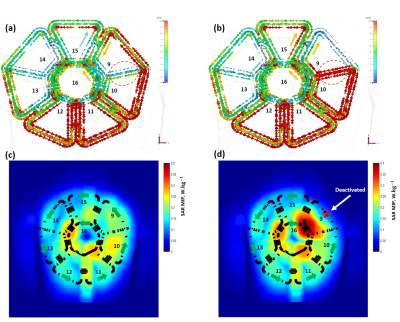 |
Screen Number: 49
1331. Influence
of Deactivated 8Tx/16Rx Transceiver Coil Elements on 3D SAR
Distribution at 7T MRI of the Body Trunk
F. Jabbarigargari, M. Terekhov, L. Schreiber
Comprehensive Heart Failure Center, University Hospital Wuerzburg, Wuerzburg, Germany
Impact: This study highlights the significant impact of
coil element deactivation on SAR, requiring a safety factor
in clinical routines to protect patients if coil elements
become deactivated.
|
| 14:03 |
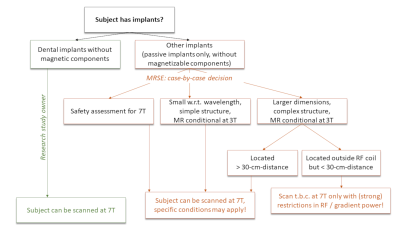 |
Screen Number: 50
1332. MR
safety in research practice at 7T: an update of our experience
in evaluating passive implants for non-clinical scans
O. Kraff, A. Verheyen, H. Quick
University Duisburg-Essen, Essen, Germany
Impact: This retrospective study shares an extensive
experience in imaging subjects with small implants within
the RF coil. For larger implants outside a minimum distance
to the RF coil a history of safe use of the GUFI
recommendations is also reported.
|
The International Society for Magnetic Resonance in Medicine is accredited by the Accreditation Council for Continuing Medical Education to provide continuing medical education for physicians.